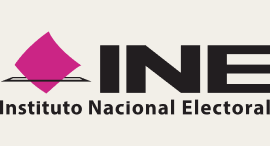Every effort to promote WhatsApp tiplines introduces the organization’s brand and content to new users and builds the audience. Previous ad campaigns run by our partner fact-checking organizations have demonstrated that a strong community engagement strategy, branding and a focussed call for action can be extremely useful.
We now have new insights from the latest round of campaigns launched in November 2020. Here are few to consider while implementing ad campaigns for promoting WhatsApp tiplines:
1. Identify a theme tied to the news cycle or audience needs
The theme of the ad being launched can depend on the news cycle, misinformation trends in the region, the partner organization’s expertise and target audience. Be it generic or a focussed call for action, it is important to strike a chord with users. Some themes followed by partners in the recent campaign included local elections, credible information on government schemes especially for the poor and COVID-19 vaccine related misinformation.
2. Know your audience
Based on the theme, target the core audience or the audience the organization would like to attract. The targeting can include certain cities or states, people with specific interests or different age groups.
3. Put yourself in the shoes of the audience
The ad content and images need to resonate with the target audience. Consider using the local language of the area and images that are local. Ask people to send in queries, suspicious messages or misleading information that they would like verified.
4. The campaign needs to align with organizational goals
Is the objective to get queries for fact-checking or engage the audience and inform them about the tipline service and the organization? The organization needs to ask these questions and design its campaign accordingly.
5. Plan in advance whether and when to pause
Most of our Indian fact-checking partners chose to pause the ad during the Diwali week, when festivities extend for a week and the news cycle slows down. However, some saw it best to run the ad for two straight weeks rather than just one.
6. Have the bot and team ready to engage with audience
It is important that the users have clear instructions on how to submit a request or to access a bot resource. It is also important for organizations to have resources, both human and bot, ready, in order to respond to submissions and engage with users.
7. Monitor results and adapt
The first two days of ad campaigns can give organizations a feel of whether the tipline is receiving more conversations than usual. If not, it is useful to revisit the ad settings and make quick changes in a trial and error method.
8. Get the strategy vetted by social media and editorial teams
Insights from both teams can help in designing a solid strategy. Creation of ad content, choosing the audience and making quick changes in ad settings and bot menu require both teams to work in tandem.
9. Develop a multichannel promotion strategy
Cross platform promotion is a great strategy to adopt. This helps in bringing the audience from all platforms to the WhatsApp tipline. Posts or tweets by the organization’s team members promoting the tipline can also be a big push for the ads. This can be helpful as the audience often identifies with the people who make the brand.
We collaborated with 53 partner organizations worldwide to design and carry out our 2024 elections projects. We extend special gratitude to our lead partners in Brazil, Mexico and Pakistan, whose work we highlight in this essay.



The 2024 elections projects featured in here would not have been possible without the generous support of these funders.












